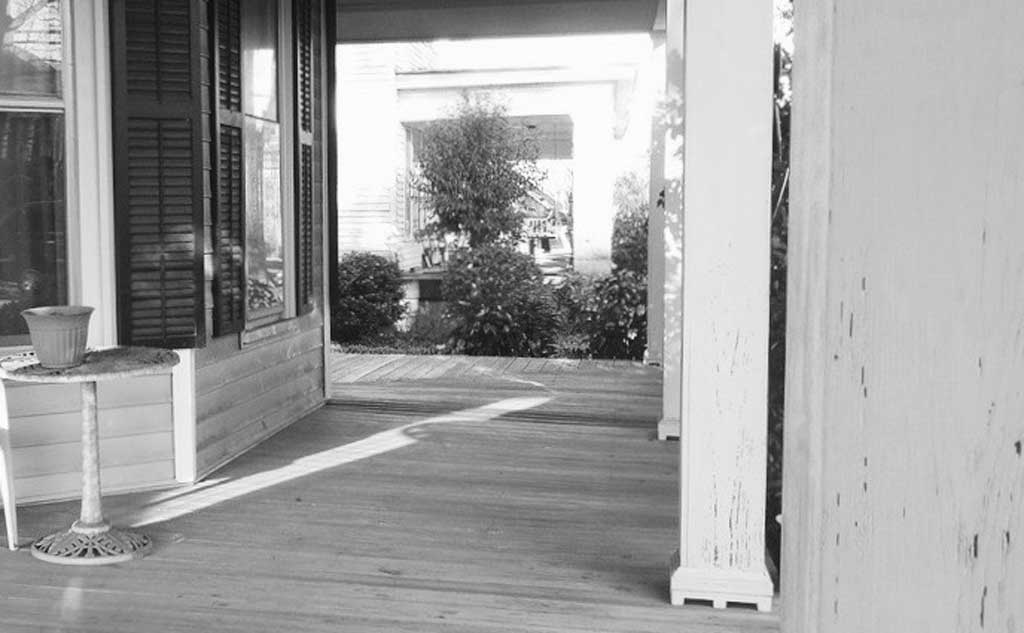Simple Is Best, In Life And In Bourbon
The old man, retired I’m thinkin’, sat motionless on his covered porch out in the country. What grabs my attention is a small, bright orange can of Prince Albert tobacco poking out of the chest pocket of his well-worn Key overalls.

The old man, retired I’m thinkin’, sat motionless on his covered porch out in the country. What grabs my attention is a small, bright orange can of Prince Albert tobacco poking out of the chest pocket of his well-worn Key overalls. In a quick glance, it resembled a blossoming flower announcing itself to the world. In a more thoughtful look, it was tucked in those overalls just as tight as a wallet, maybe more so. His rough, workingman hands took turns cradling a well-used pipe. Tobacco smoldering, the chewed-on end barely rested on his lower lip, moving it only when he spoke. That wasn’t often. He preferred to watch the world go by, to see what others take for granted. He enjoyed the view from that old wood porch, the paint-peeled pillars holding up a full roof, so as to sit out in all weather, including those misty, humid, summer afternoons. He enjoyed the company of others, so long as they adhered to his principles. “Simple is best,” he would say when asked his opinion. “More fancy, more trouble” He then reached over carefully transporting a shot glass to meet his protruding lips, eager to reach the rim, brimming with bourbon.

I thought he would shoot it, but instead, he just sipped, looking over my way with a mischievous wink. The ensuing smile told me everything I needed to know. This was his enjoyment, his relaxation. A single shot glass filled to the brim with his favorite bourbon. Simple is best. More fancy, more trouble.
As I now sit here, sipping my glass of bourbon and thinking my thoughts on life,

I believe he, along with all the other bourbon and whiskey drinkers that came before us knew this phrase, “Simple is Best,” to be an eternal truth in the evolution of moonshine, whiskey, and bourbon.
Whether you believe the responsible person to be Jacob Beam, Elijah Craig, Evan Williams, the Samuels family, or any other of a number of familiar names, the process started with a simple, common ingredient, corn. Harvested in late summer, it was a forgone conclusion that corn whiskey would then be made in fall. After all, what was one to do with the extra corn that was grown and harvested at the urging of his own government?
Of course, it was to be whiskey. It had to be. Whiskey-filled barrels were much easier to store, move around, load on the flat boats, and ship down the Ohio and Mississippi Rivers to New Orleans than those bulky sacks of grain. And let’s face it. There was no doubt that the liquor was in higher demand and much easier to sell.
But, as the story goes, all of those excellent farmers and distillers had to wait for the river to rise from the fall rains before they could then load their product on the flat boats for distribution. This allowed that corn liquor to sit in the barrels, unceremoniously and perhaps, unintentionally, aging all the while. Add to that the actual time it took to make the trek down the river, and well, you can guess what type of magic happened in those barrels. That unplanned aging process proved to make their traditional corn liquor or moonshine into a much smoother and better tasting product.
Then came the charring of the barrels. A simple, yet intriguing process in distilling history, but also one that raises more questions than answers. Were the first barrels partially burned in a barn fire and used for whiskey storage anyway? Or did the charring process come about from a purely monetary perspective, saving money by reusing the barrels, charring the insides to remove any traces of previous contents, which generally included vinegar or fish? Some adhere to the idea that one of the distillers was simply a genius, and knew that charring the barrels would cause the liquid to interact with the charred, caramelized wood and produce that great amber colored, mellow nectar. Whatever the initial reason for charring was, that process, along with aging, brought about the birth of our beloved Kentucky bourbon.
Bowing our heads while raising our glasses, we remain thankful.
Becoming more valuable than currency, this style of aged and charred barrel bourbon became highly requested and sought after, actually being asked for by name, which generally meant the area or county it came from. Again, a simple way to identify what one wanted, because simple is best, and simple still works.
Today, we may be a little spoiled by all the choices. We gaze longingly at the rows and shelves of whiskeys, bourbons and scotches available to us.

Fancy, flashy labels draw the eye. A generous, if not suspect, selection of flavor profiles tempt our palate, sometimes creating that little extra drool inside of our mouths, but also making us wonder if the taste will match our perception. Catchy, cute names can make us repeat them out loud, sometimes with a snicker or sneer.

And yet, more often than not, the correct choice here, friends, is as simple as it was for our bourbon and whiskey forefathers. I’ve now grown to realize that, “Simple is best. More fancy, more problems”.
